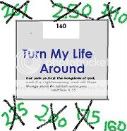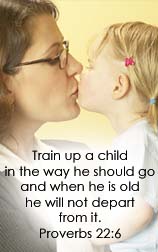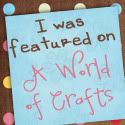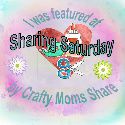Thanks to the Homeschool Review Crew, we were able to change up our science routine recently. We were given the opportunity to try out the e-Science Homeschool Science Curriculum from Supercharged Science. We received access to all levels (K-12) for a full year.
The creator of Supercharged Science, Aurora Lipper, is an enthusiastic, personable woman who wears many hats. Not only is she a busy mom of four, but she is a mechanical engineer, university instructor, pilot, and astronomer. She has been teaching science for 20 years now! The way she teaches helps students to focus on "wonder, discovery, and exploration." You can find out more about Aurora by heading to her About page. I was quite excited to get the chance to try out her award-winning online school.
With Supercharged Science, you have the choice between focusing on Topics, Grade Levels, or a combination of both. Due to the fact that I am homeschooling four children ranging from 7 years old to 12 years old, I chose to go the topic route. All I had to do is click on "Topics" from the main menu bar at the top of the page, and I was directed to the Topics page.
There are 20 units to choose from. Here, check out this great list:
- Mechanics
- Motion
- Matter
- Energy 1
- Energy 2
- Sound
- Astrophysics
- Chemistry 1
- Light
- Electricity
- Magnetism
- Alternative Energy
- Thermodynamics
- Electronics
- Chemistry 2
- Life Sci 1
- Life Sci 2
- Biology 1
- Biology 2
- Earth Science
In addition to the main units you will find three introductory lessons:
- New to e-Science?
- Unit Zero: Overview of e-Science
- The Scientific Method
Additionally, you will find:
- Award-Winning Science Fair Projects
- Mathemagic and
- Teaching Resources
While using Supercharged Science, you will watch videos of Aurora talking about the topics and demonstrating experiments, do the experiment with your children (as long as you are able to get the materials), complete charts and record information, read follow-up information explaining the science behind the experiment, and answer questions. There are links to all of this information on the lesson pages, which you find after reading through the initial unit page. There is a link to the lesson at the bottom of that page.
For example, when I clicked on the Unit 1: Mechanics link from the topics page, I was directed to the Mechanics unit (the unit I decided to begin with), where we read some introductory information and watched an introductory video. At the bottom of the page I clicked on the link to the first lesson: Force.
That brought me to the following page:
Here again you will find introductory information to read and watch.
To the right is the list of links to help with the lessons.
Let's take a closer look at that for a minute:
Let's take a closer look at that for a minute:
The unit information that you can download gives you information on what grades the unit is appropriate for, how long it will take (depending on how many experiments you do), key vocabulary words and definitions, a description of the unit, the objectives including highlights of each lesson, and some additional textbook reading.
I love that Aurora has included a shopping list for each unit, so you know what you need to have available. Though, you may want to watch the videos before actually buying the materials to make sure these are experiments you want to do with your children. The majority of the materials are either already in your home or are easy to find at the store. Though, we have come across some experiments we were only able to view because we couldn't get the materials.
Then there are links to each of the lessons in the unit, including additional readings, a page that lays out all the experiment videos for the lesson together, and exercises (which are sort of review questions to see what your students (and you) have learned by watching the videos, participating in the experiments, and reading the information. There are also links to the answers, which you aren't supposed to look at until you are done.
If you scroll down on this page, you will find a list of the scientific concepts learned and links to each of the video lessons.
From here, just pick an experiment you wish to learn about, and click on the link. It is recommended to watch the videos and do the experiments first to get them engaged in the subject matter, and then you can move on to the readings to find out the whys behind the experiments.
We worked on a couple of experiments a week, watching videos, reading information, doing the experiments, occasionally filling in the charts, and discussing the questions. We started with the first two lessons: Detecting the Gravitational Field and Detecting the Magnetic Field, which were quite simple experiments.
We worked on a couple of experiments a week, watching videos, reading information, doing the experiments, occasionally filling in the charts, and discussing the questions. We started with the first two lessons: Detecting the Gravitational Field and Detecting the Magnetic Field, which were quite simple experiments.
I loved her tongue in cheek comments in some of these lessons, such as the first one on gravity where we were told in the instructions,
"Here’s what you do:
1. Jump!
2. Carefully observe whether or not you come back down."
Yes, we had a bit of a chuckle there. Just as I did when I read the material needed for this experiment.
"Here’s what you need:
- *you
- *the Earth (or any planet that’s convenient)
- *a ball"
Being our first exposure to Aurora's way of teaching, this sure did help to draw me in.
Here is a look at the experiments we did:
We had fun with this simple observational experiment. The children jumped, tossed balls, and dropped them as well. And we used the charts to compare the rates at which the balls of different sizes and weights fell from various heights.
Next we had fun making a compass and using a store-bought compass to observe the magnetic field.
Then I asked the older girls to watch some videos to choose which ones we would do next. They chose "Detecting the Electric Field." So, we had some fun with static electricity, and learned about protons, neutrons, and electrons. It was quite fun watching the charged balloon made the ruler move as the negatively charged balloon attracted the positively charged ruler.
Sorry for the blurry picture, but I loved his reaction.
And we also had fun sticking the balloon to the wall. Though we are unsure on why it worked on the wall but not the trim.
We then went back to working with magnets for a bit to explore the strength of force on an object. We learned that "the closer an object comes to the source of a force, the stronger that force will be on that object."
I had purchased some "extra strength" magnets from Walmart, as the instructions said we needed a strong magnet. Sadly, those magnets weren't strong enough. Thankfully, one of the magnets we still had from an old preschool toy was strong enough, though still not near as strong as the ones that Aurora had.
We tried to get our paper clip, and other objects to "fly" with other magnets, but they just weren't strong enough. Though they did at least attach to each of our objects even if just for a brief second. It did make it a bit tricky to try to fill out the chart for that lesson.
The next day we got to watch that same magnetic attraction in our cereal.
By far, I would have to say the children's favorite experiment has been building bridges. Um, mommy might have had a lot of fun with this one too.
We learned how a firm foundation, plus an arch, accordian folded paper, or combination, would make a stronger bridge. The clay balls are our people, just like Aurora did.
We have really enjoyed all the great experiments that Aurora has demonstrated for us and we have been able to participate in. They really do help us to understand the concept being taught. Though I have read some of the information to the children, I have to admit, a lot of it has gone over their heads (and mine as well at times). I mean, we understand the basic concept, but when Aurora goes into all the technical detail, zing, right over our heads. Such as the following:
"To be technical, an inverse-square law is any physical law stating that some physical quantity or strength is inversely proportional to the square of the distance from the source of that physical quantity."
Yeah, there was a reason I didn't take physics in high school.
I much prefer the basic explanation:
"When it comes to forces, it basically means that the closer an object comes to the source of a force, the stronger that force will be on that object. The farther that same object gets from the force’s source, the weaker the effect of the force."
So, although the videos and experiments themselves are wonderful for elementary aged children, I would say some of the reading is definitely more suited for middle school, or even high school. I do appreciate that the children are getting an introduction to these concepts with the hands-on learning, so as they get older, this will be a foundation that will help them learn to comprehend the more technical details. Hopefully. As long as they can wrap their mind around it better than their mother can.
If you are looking for a wonderful hands-on science curriculum for your children, I would definitely recommend you looking into Supercharged Science.
Something I wanted to make you aware of, is there are improvements being made to the website which are going to make it even more awesome because it will be easier to navigate. I admit, when I first gained access to the site, I was a bit confused as to some of the navigation; however, I have become used to it after several weeks of using the site.
You can find Aurora Lipper and Supercharged Science on Facebook, Twitter, Pinterest, and YouTube.
If you are looking for a wonderful hands-on science curriculum for your children, I would definitely recommend you looking into Supercharged Science.
Something I wanted to make you aware of, is there are improvements being made to the website which are going to make it even more awesome because it will be easier to navigate. I admit, when I first gained access to the site, I was a bit confused as to some of the navigation; however, I have become used to it after several weeks of using the site.
You can find Aurora Lipper and Supercharged Science on Facebook, Twitter, Pinterest, and YouTube.
Don't forget to click on the banner below to see what my fellow Crew Mates had to say about Supercharged Science.


















































































![[PREMIO2009.png]](https://blogger.googleusercontent.com/img/b/R29vZ2xl/AVvXsEjXD_Gx-wZ9EM5hXKrEYLksEBkYfRQtmb8VDVTDG_yyLggQoFIstZsh4zszdG20KqErZicRzEhiNYLty7j3IMXJYsABqkXjr8pp-ncj71xCbpxlXGbGpZq2fTuDQqq1RMKV4DPcDBnBViA/s1600/PREMIO2009.png)



